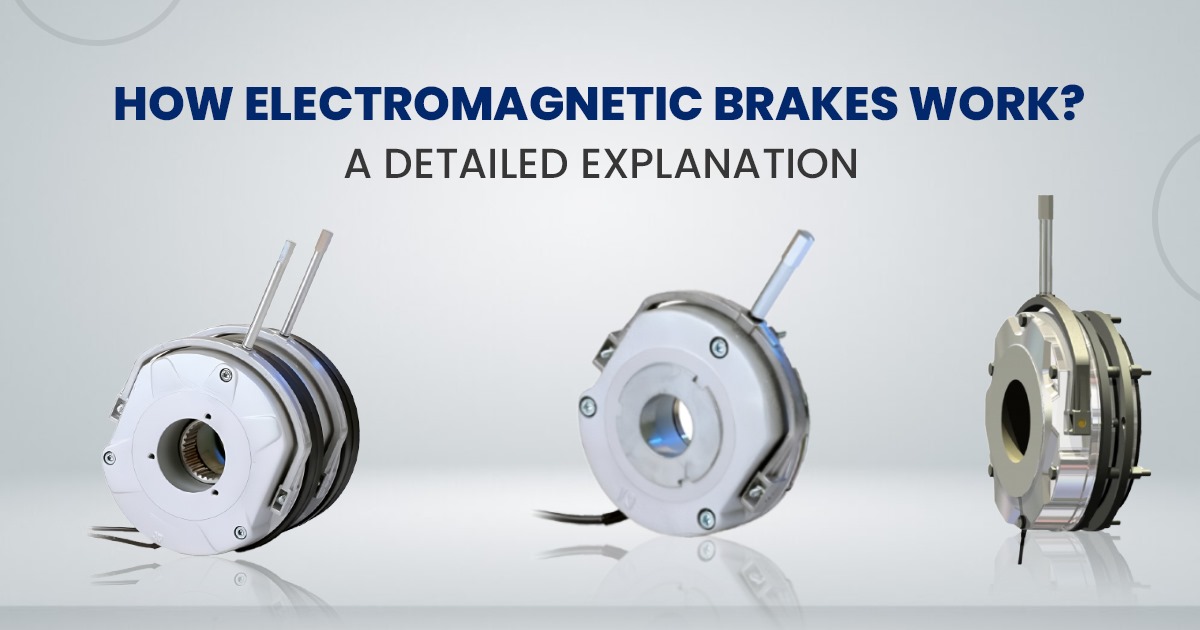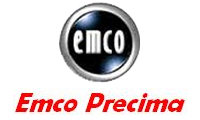
How Electromagnetic Brakes Work: A Detailed Explanation
- March 21, 2025
- by
- bhavik@bcreative.in
Visualize a massive crane lifting heavy materials on a building site. What if the braking system malfunctions? A delayed stop can lead to accidents, equipment damage, or even critical situations. Worry not. Electro Magnetic brakes are here. Unlike conventional friction brakes, these modern braking systems rely on electromagnetic force to provide precise braking and enhanced security. The fact that they can deliver instant, effective, and consistent braking makes them indispensable in applications where control and security are paramount.
What is a DC Electromagnetic Brake?
A DC Electromagnetic Brake works on the principle that an electric current will create a magnetic field, which will engage or disengage the braking system. When power is supplied, the brake is released and there will be movement. When power is cut off, the brake is activated instantly, enabling rapid stopping. This makes it ideal for high-performance machinery such as cranes, hoists, and elevators.
Anatomy of a DC Electromagnetic Brake
A DC Electromagnetic Brake consists of significant parts that work together to deliver smooth and efficient braking:
Coil: Produces the electromagnetic field when powered.
Armature Plate: Translates by reaction to the magnetic field, engaging or releasing the brake.
Friction Lining: Provides effective stopping ability.
Spring Mechanism: Springs the brake back to position upon removal of power.
Mounting Hardware: Secures the system to the equipment.
Why Choose an Electromagnetic Brake?
There are various reasons why Electromagnetic DC Brakes are the first choice in industrial applications:
- High Reliability: Dependable performance with reduced wear and tear.
- Fast Response Time: Enables immediate stopping action.
- Energy Efficiency: Energy is required only during releasing of the brake.
- Low Maintenance: Less number of moving parts means lower maintenance.
- Quiet and Smooth Operation: Suitable for those applications where the silence of operation is an issue.
Where Are Electromagnetic Brakes Used?
Electromagnetic brakes find extensive use in many industries owing to their precision and reliability. Common fields of usage are:
- Cranes & Hoists: Required for secure and regulated lifting.
- Elevators & Escalators: Ensuring safe transport of passengers with smooth stopping action.
- Machine Tools: Facilitating precision with CNC and automated systems.
- Automotive Industry: Applied on hybrid as well as electrical automobiles for regenerative braking.
- Textile & Printing Machines: Ensuring stopping precision in high-speed operations.
Electromagnetic Brakes in India: A Growing Market
The market for electromagnetic brakes in India is on the rise, with industrial automation, rapid infrastructure development, and growing safety regulations fueling the expansion. Manufacturing, construction, and transportation industries are adopting DC Electromagnetic Brakes to achieve maximum efficiency and meet industry requirements. With India accelerating its modernization process, the market for electromagnetic braking solutions also promises to increase further.
Electromagnetic Brakes from Emco Precima
Emco Precima is a specialist in reliable Electro Magnetic Brakes for durability, efficiency, and precision. Their braking solutions are designed for different industries, providing:
Innovative Designs: Optimized for optimal performance.
Custom Solutions: Designed to meet specialized industrial requirements.
Stringent Quality Standards: For guaranteed reliability and safety.
Electromagnetic brakes, and especially DC Electromagnetic Brakes, have transformed industrial brake systems with their efficiency, accuracy, and dependability. With growing requirements for electro-magnetic brakes in India, Emco Precima is a leading industry player. We offer cutting-edge solutions for all types of applications whether it’s crane elevators or machine tools. Our braking system is high in performance and safety and forms an integral part of industrial machinery.





